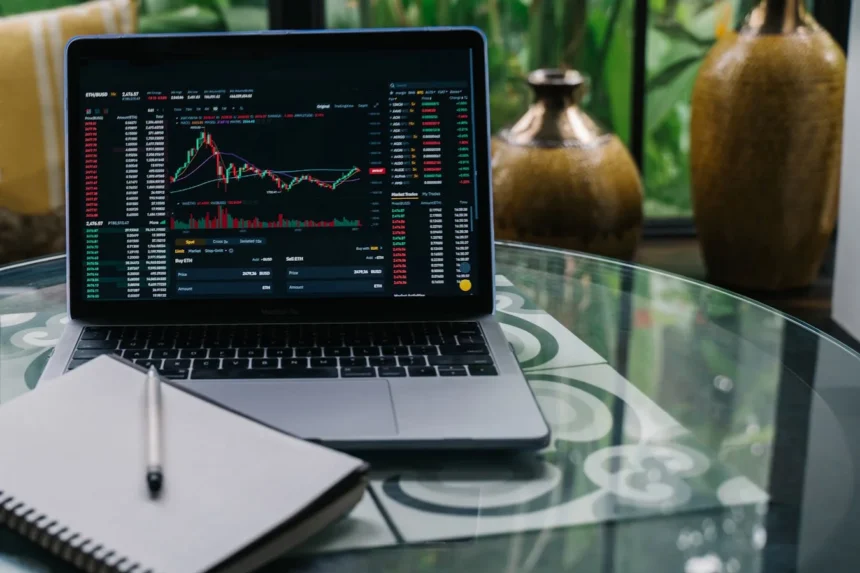The Asian markets have long been a vital part of the global financial ecosystem, serving as a hub for trade, innovation, and economic growth. With technology and fintech revolutionizing the financial sector, platforms like FintechZoom have become indispensable for tracking market trends and providing real-time updates. This article dives into the latest developments in Asian markets today, highlights factors impacting these economies, and explores why monitoring these trends is vital for investors and businesses alike.
Table of Contents
- Introduction to FintechZoom and Its Relevance
- Overview of Today’s Performance in Asian Markets
- Key Drivers of Market Movements
- Why Asian Markets Are Important for Global Investors
- How Fintech Innovations Are Shaping Market Dynamics
- Top Tips for Keeping Up With Asian Market Changes
- Final Thoughts
Introduction to FintechZoom and Its Relevance
FintechZoom is a cutting-edge platform designed to provide up-to-the-minute updates on global financial markets. It serves as a go-to source for insights into stock performances, market trends, and emerging opportunities. For anyone keeping an eye on the volatile and fast-evolving Asian markets, FintechZoom is an invaluable tool.
Whether you’re an investor or an entrepreneur exploring opportunities in Asia, platforms like this help in making data-driven decisions. Real-time access to financial trends ensures you don’t miss out on critical market shifts.
Internal Link: For more updates on the global financial landscape, check out our exclusive articles on Trends Mag, where we cover key trends impacting all major sectors.

Overview of Today’s Performance in Asian Markets
Today’s Asian markets report highlights a mix of gains and challenges, showcasing the region’s complex economic dynamics. Key indices like the Nikkei 225, Hang Seng, and Shanghai Composite are among the major benchmarks that reflected varied performances.
|
Market Index |
Daily Change (%) |
Key Takeaway |
|---|---|---|
|
Nikkei 225 |
+0.85% |
Boost due to strong retail earnings |
|
Hang Seng |
-0.45% |
Tech sector pullback dragged results |
|
Shanghai Comp. |
+0.22% |
Slight gains amid government stimulus |
|
Kospi |
+1.10% |
Surge in semiconductor stocks |
Notable movements include the semiconductor sector’s strong performance in South Korea and the impact of China’s new stimulus package aimed at restoring growth post-pandemic slowdown.
Key Drivers of Market Movements
Asian markets are influenced by a variety of factors, including economic indicators and geopolitical developments. Here’s a closer look at the key drivers shaping today’s trends:
Economic Indicators
Factors like GDP growth, inflation rates, and employment figures play pivotal roles in shaping market sentiment. For example:
- China’s Consumer Price Index (CPI) reported lower-than-expected inflation, indicating potential for further government-backed economic measures.
- Japan’s Export Data showcased a 5% year-on-year increase, signaling recovery in trade.
Regional Geopolitical Trends
Geopolitical tensions, such as U.S.-China trade relations or South Korea-Japan regulatory standoffs, often create ripples across Asian stocks. Additionally, improving relations between ASEAN countries and key global powers are fostering trade partnerships, further influencing market volatility.
Sector-wise Breakdown
Technology
- The technology sector remains a leader in driving growth across Asian markets.
- Companies specializing in semiconductors, software-as-a-service (SaaS), and artificial intelligence (AI) are witnessing an uptick in global demand.
Example: South Korea’s Samsung Electronics reported a surge in market value, driven by increased demand for next-generation chips.
Energy
- Energy stocks saw mixed performance across the region as global oil prices fluctuated.
- Renewable energy players in China and Japan are gaining traction due to sustainability initiatives.
Stat: The Hang Seng Energy Index fell by 0.7%, reflecting broader challenges in the sector.
Consumer Goods
Consumer goods stocks rallied, fueled by rising disposable incomes and strong retail performances in countries like Japan and India. E-commerce growth, particularly in China, continues to drive upward momentum.
Trend Fact: Major e-commerce platforms reported sales growth of 15% during mid-year sales campaigns.
Why Asian Markets Are Important for Global Investors
Asian markets often indicate broader global growth trends. For example:
- Diverse Economies: The region includes both advanced economies (Japan, South Korea) and emerging markets (India, Vietnam), offering varied investment opportunities.
- Innovation Hub: Countries like China and Singapore are leading in fintech innovation, presenting lucrative investment zones.
- Global Trade Backbone: With major ports and trade routes, Asia is central to global supply chains.
Investors seeking to diversify their portfolios or capitalize on high-growth opportunities should look to these markets as fertile ground.

How Fintech Innovations Are Shaping Market Dynamics
Fintech is revolutionizing accessibility, transparency, and efficiency in Asian financial markets. Platforms like FintechZoom provide:
- Real-time insights into stock performance, cryptocurrency trends, and sector-specific developments.
- Improved decision-making tools powered by AI and machine learning models predicting market trends.
- Seamless trading services aimed at retail investors entering the Asian markets.
For an in-depth guide on fintech’s impact globally, check out our comprehensive coverage on Trends Mag.
Top Tips for Keeping Up With Asian Market Changes
- Leverage Market Tools: Use platforms like FintechZoom for up-to-date information on market performance and trends.
- Stay Current on Economic Data: Monitor reports such as GDP figures, CPI, and PMI for actionable insights.
- Diversify Investments: Balance between high-growth sectors (like tech) and stable performers (such as utilities).
- Follow Regional News: Geopolitical events can have immediate and far-reaching effects on Asian stocks.
Final Thoughts
Asian markets are evolving rapidly, driven by economic growth, innovation, and geopolitical developments. Platforms like FintechZoom make navigating these complex landscapes easier for investors and businesses alike. By staying informed, leveraging technology, and thinking strategically, stakeholders can unlock the vast potential that these markets have to offer.
For more business and market insights, don’t forget to visit Trends Mag. Stay ahead with timely updates on global trends shaping the future!





